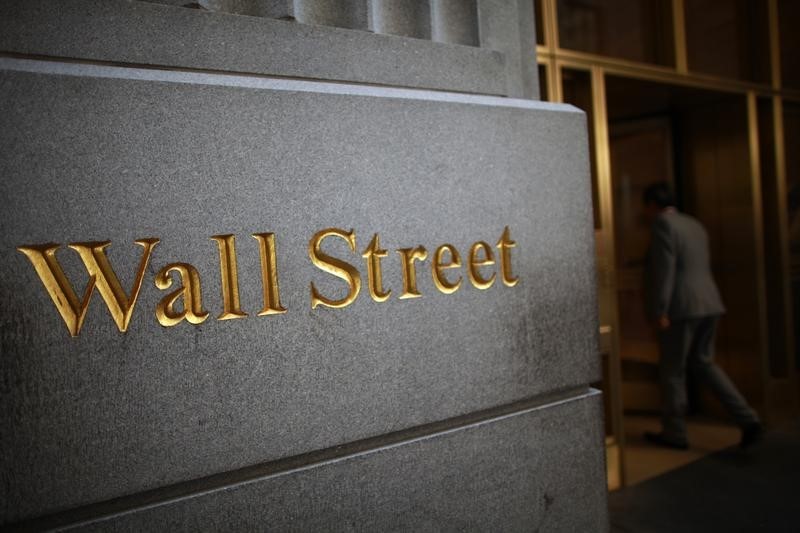This post was originally published on this site
https://i-invdn-com.akamaized.net/news/LYNXMPEA7S0VT_M.jpg © Reuters.
© Reuters.By Yasin Ebrahim and Kim Khan
Investing.com – Investors would be forgiven for feeling seasick after all sharp moves in the markets this week.
And amid all the historic stock moves, huge sums of Fed money and whipsawing rates there was plenty out of the spotlight.
That includes a broader look at the economy, rather than the daily market gyrations, a Fed program that didn’t get the big headlines and the question of whether we may actually need new words to figure out how to address the problems of the virus.
Here are three things that might have flown under the radar this week.
1. It’s Not Just the Market, It’s the Economy
U.S. stocks staged an epic rebound on Friday, a day after plunging to their worst defeat since the 1987 market crash. But while such wild swings are expected to be commonplace in markets over the next few months, the global economy is set for a gloomier backdrop, analysts warned.
“The worst for the economy is still to come over the next several months,” said Joachim Fels, global chief economic adviser at Pacific Investment Management Co. (Pimco).
The stark warning comes as a slowdown in both demand and supply in China – amid Beijing’s aggressive efforts to contain the virus – is expected to spill over into the world economy.
Fels’ warning may even seem tame compared to those of his peers, some of whom are not only sounding the alarm on a coming recession but are urging investors to get out of risk assets.
“The sky is falling,” said Chris Rupkey of MUFG Union Bank in a note last week. “Get out, get out while you can. Wall Street’s woes have to eventually hit Main Street’s economy hard. Bet on it.”
Much of the forecasting power on the economic impact from the coronavirus centers on assumptions over when peak infections will likely occur, particularly in countries outside of China.
But with cases showing no sign of a slowdown, particularly in Europe, which has become the epicenter of the outbreak, fears are running higher the pandemic could last a long time.
Against the growing economic threat of the virus, however, global central banks, including the Federal Reserve have pumped liquidity in the market to cushion the blow. But while many argue that demand-boosting stimulus measures are of little use in the fight against the Covid-19, knowing that central banks stand ready to act can be a comfort.
“With rates already at historically low levels, a further reduction is unlikely to provide a meaningful boost to investment or consumption,” Stifel said in a note. “But the willingness and ample readiness of central bank officials to deploy policy should reassure investors and help quell knee-jerk reactions to the latest coronavirus tally.”
2. QE4 Is Here
When it came to the Federal Reserve this week, the $1.5 trillion in repo funding stole the headlines, both for its size and its failure to arrest a huge stock selloff (if indeed that was an aim).
Then attention turned to next week’s FOMC meeting, with Goldman Sachs (NYSE:) predicting a rate cut of 100 basis points, up from its previous estimate of 50 bps.
But what may be the biggest weapon in the Fed’s arsenal was slightly overlooked: the return of quantitative easing.
The Fed started Friday with plans to buy around $37 billion in five maturity sectors, with $17 billion in purchases of maturities of seven years or more to address “highly unusual disruptions in the market for Treasury securities associated with the coronavirus outbreak.”
If rates go to zero next week, as expected, then QE is the only avenue to monetary policy accommodation, economists at Pantheon Macroeconomics said.
“(W)e expect the Fed to purchase $60 (billion) of securities across the spectrum for the foreseeable future: QE4 is here,” Pantheon wrote in a note.
“This broader action will offset the inevitable downward pressure on money supply growth as economic activity contracts,” it added. “It should weaken the dollar and raise asset prices, other things equal. They won’t be, but these actions should limit the damage.”
The Fed did not promise that the Treasury purchases will continue beyond April 13, but “it’s inconceivable to us that the Fed will not extend these operations,” Pantheon said.
3. What’s Another Word for ‘Stimulus’?
Along with monetary policy measures, the market is looking for fiscal measures to ease the economic shocks of Covid-19. But in discussing the best tactics, what if we’re not even using the right terminology?
That debate arose on Twitter, centering on whether it’s useful to use a generally accepted term like “fiscal stimulus” in exceptional economic times.
We’re currently in a situation where a “stimulus is anything that slows the spread of the virus, even if in the immediate sense it ‘hurts’ the economy,” Austan Goolsbee, former chairman of the Council of Economic Advisers, argued.
Bloomberg’s Joe Weisenthal replied that “stimulus” is the wrong idea, as that boosts the economy, and what’s needed is something that keeps households supplied with cash to meet their financial obligations.
We’re “trapped with the semantics of a (pre-Covid-19) world,” said Diane Swonk, chief economist at Grant Thornton. “We need to hit the reset button on thinking and verbiage, while not losing sight of the meaning. This doesn’t have to be the Titantic. We need lifeboats in all ways we can think of to fight the chill.”

